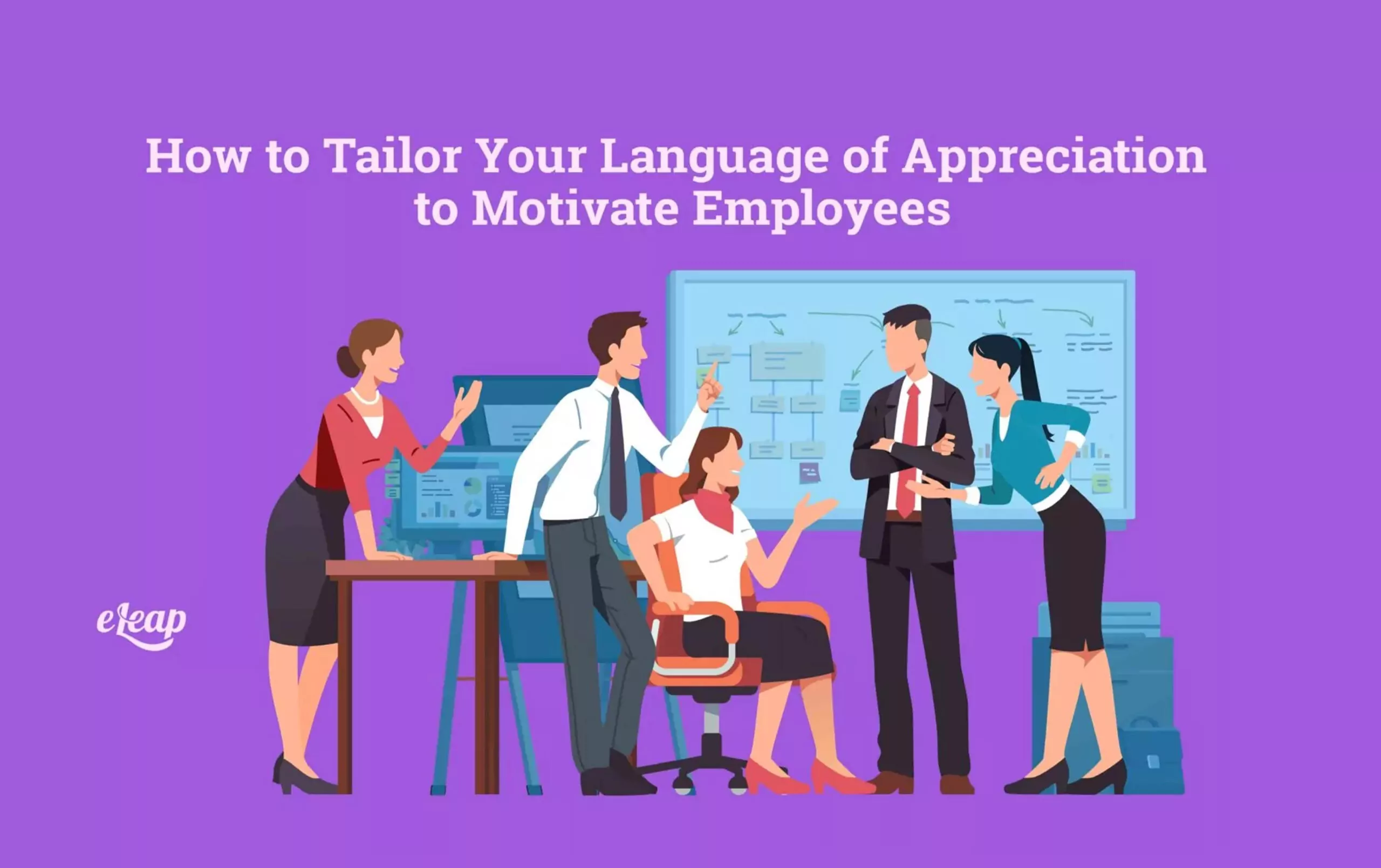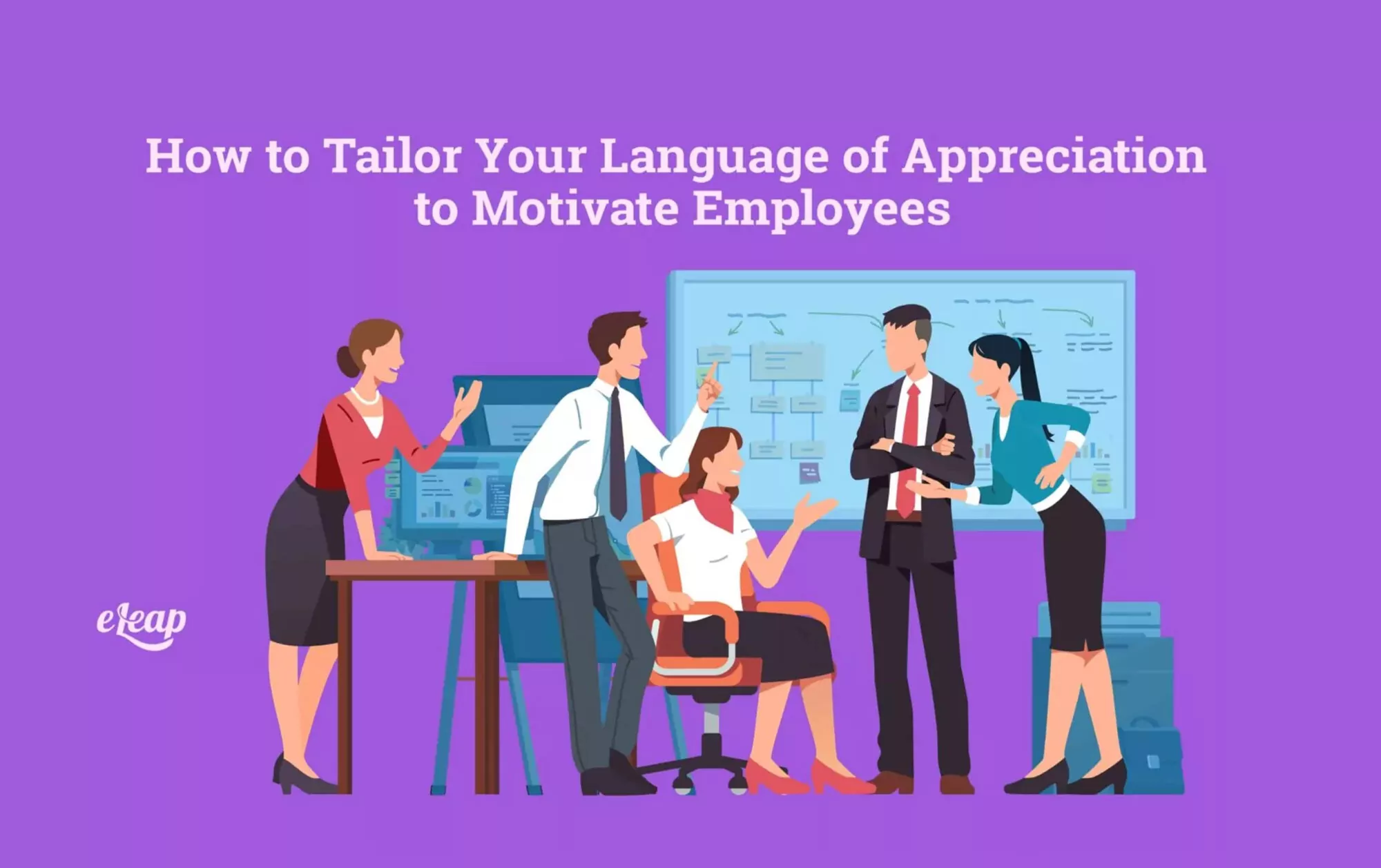How to Tailor Your Language of Appreciation to Motivate Employees

Why should you use a particular language of appreciation with your team members? Your employees work hard for you every day. They leave their homes, families, and personal responsibilities and show up to the office ready to tackle the day’s tasks.
Of course, they receive a paycheck. They probably even receive benefits and company perks on top of their wage or salary. However, this often isn’t enough to maintain feelings of appreciation or value across the board.
If it seems like a monumental task to show each person that you value them, we’re here to help. Learn the main ways that people receive recognition to help you tailor your language of appreciation to each person. This heightens morale and develops employees who give their best to you and the company.
What Does ‘Language of Appreciation’ Mean?
Isn’t a simple thank you enough? Sorry, no, it’s not. Every human being responds differently to expressions of recognition and appreciation. This is explained in detail in Gary Chapman’s groundbreaking book, The Five Love Languages.
The original book focuses on romantic relationships. However, the concept is easily applicable to any situation. Chapman shows this with follow-up books that describe how to apply his concept to children, teenagers, long-distance relationships, and others. Luckily for managers, the idea is also highly applicable to the workplace.
In case you haven’t read it, here’s a little breakdown of what the different love languages are.
- Physical Touch – Physical connection is deeply human. People who respond to this feel loved and appreciated when they actually touch another person.
- Words of Affirmation – Some people feel connected to another with spoken or written words detailing feelings.
- Quality Time – The phrase “quality over quantity” applies here. Those who need quality time feel seen and valued with one-on-one connection and undivided attention.
- Gifts – From small, thoughtful trinkets to exciting surprise reveals, gifts show many people that they are important and remembered.
- Acts of Service – We all need help from time to time (or often). People who need acts of service feel loved when someone does something for them out of the kindness of their hearts.
Perhaps this is the first time you’ve heard the term ‘language of appreciation.’ Or maybe you’re familiar with Chapman’s work. Either way, learning and using people’s particular appreciation languages creates a culture of positivity, value, respect, and high morale.

How to Use Each Language of Appreciation with Your Employees
Love is a very broad word. At work, the word love is easily replaced with:
- Value
- Appreciation
- Respect
- Relationship
- Teamwork
- Connection
When a corporate culture embodies these elements, people are motivated to come to work. They want to succeed, and they want to help others do the same. However, people are best motivated when their particular language of appreciation is used to convey these values.
Think about how each of these “love languages” applies to your particular company and the people who work for you.
Physical Touch
This one is probably the most controversial in the workplace, especially within the last decade. It’s crucial to use appropriate boundaries regarding people’s physical space, while still realizing that this is a valued human connection.
Appropriate touch in the workplace could take several forms.
- Handshakes – A firm, strong handshake shows confidence and connection.
- Shoulder pats – Touching someone’s shoulder during conversation shows recognition and sincerity.
- Elbow nudges – These are often used for camaraderie.
- High fives – Usually used for moments of excitement, this is a simple way to touch without getting too close.
- (Sometimes) Hugs – These are tricky, but if someone is a “hugger” and you are comfortable with it, hugs are a great way to celebrate wins.
Learn to recognize body language and non-verbal communication. People often tell you their comfort level with their stance and body movements. Let others take the lead, and understand that one should always defer to the person who has the smallest level of physical comfort.
Words of Affirmation
This might be the most common language of appreciation in the workplace, yet it’s also often the most ineffective. Managers tend to use vague, generalized comments and buzzwords with their teams. These don’t convey individual achievement or recognition apart from the crowd.
When you use words of affirmation, make sure they come across as thoughtful and personal. People who respond to this language of appreciation know the power of words, so they know that baseless comments made in passing aren’t worth their weight.
Try some of these ideas to show your employees who value words of affirmation that they matter to you.
- Recognition board – Put up a whiteboard in the breakroom where you write down achievements, goal progress, and small, positive things that you notice people doing.
- Mailbox notes – Jot down a quick thank you or something that you saw an employee do well. Put it in their inbox or mailbox; good mail brightens people’s days!
- Random walk by’s – Pop your head into an employee’s office or cubicle and let them know that you appreciate their hard work.
In these ideas and other connections with people, try phrases and language like this that gives concrete affirmation.
- “I notice you getting here earlier each day to tackle some highly concentrated work. That work shows creativity and attention.”
- “Your thoughtful comments in staff meetings help people see the whole picture.”
- “Each team member has positive things to say about your performance. You delegate responsibilities and share teamwork evenly.”
Quality Time
Yes, you have many tasks that require your attention each day. You aren’t expected to spend all your hours in deep conversation with every person who crosses your path. However, one-on-one connection makes a big difference to those who respond to this language of appreciation.
- When people come to you, stop other tasks. Don’t type away at quick emails or sort through your mail while employees are asking you questions.
- Make eye contact when talking so that people know they have their attention.
- Hold appointments instead of rescheduling to your convenience. This shows you value other people’s time as much as your own.
- Make good use of meeting time; don’t waste precious minutes with fluff or discussions that are possible over email.
Furthermore, quality time is a great opportunity to bring some fun into the workplace.
- Extend the lunch hour every once in a while and take the team out to lunch.
- Organize happy hours near the office.
- Put together exercise classes to re-energize and promote healthy activity.
- Invite people to check in with you one-on-one so that they know you value their opinion and that you want to help them achieve their goals.
Gifts
Again, employees get paid to do their work. However, gifts convey a different emotion. Firstly, this is because you probably don’t cut their paycheck. Secondly, gifts are usually associated with something “unearned” and “just because.” This makes them more special instead of required.
Gifts in the workplace can be a delicate matter, too. You don’t want others to feel slighted or that you show favor toward some and not others. However, when used with thoughtfulness and consideration toward the group, gifts are a highly effective language of appreciation.
- Reward the entire team with new desk chairs that emphasize comfort.
- Bring in fruit and muffins for breakfast once a month.
- Provide coffee, tea, and healthy snacks in free-of-charge vending machines.
- Offer gift cards or baskets as extra-hour incentives.
Acts of Service
People who respond to this language of appreciation know the value of every person’s role on a team. We all have jobs to do, and when others help you out it makes the job that much more enjoyable.
Acts of service don’t have to be grand gestures at every turn. Even small acts of kindness show that you see and value the people and their respective efforts.
- Clean the breakroom even if you aren’t part of the weekly rotation.
- Offer to make copies for someone if you’re on your way to the machine.
- Bring important paperwork to the corporate office for an employee so they can go home early for a family event.
Conclusion
People who feel connected to others at their job are more likely to want to come to work. They value their position and look forward to what’s to come. Take the time to learn each person’s language of appreciation to further your connection with them.
Remember that the ways people receive languages of appreciation are also the way that they take criticism strongly. For example:
- When someone responds to words of affirmation, they take careless words to heart.
- Someone who appreciates quality time feels ignored and disrespected when you pretend to listen and instead take care of other menial tasks.
Try to deliver constructive criticism and improvement with thought and sensitivity to people’s love languages, as well.